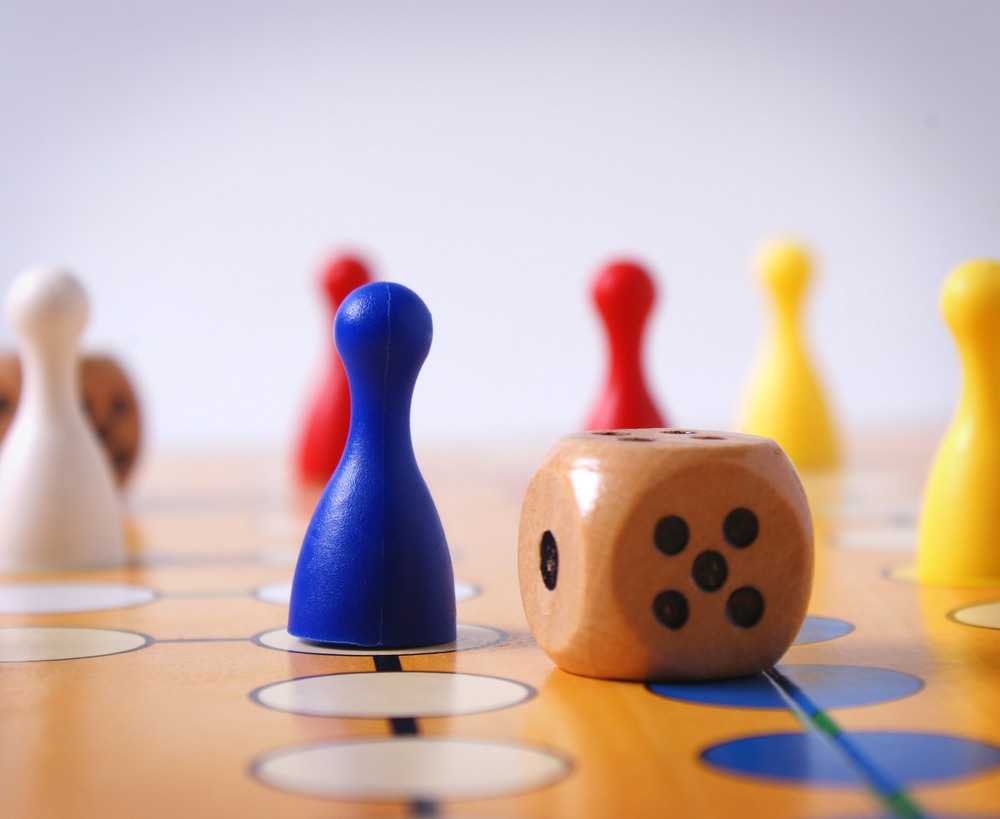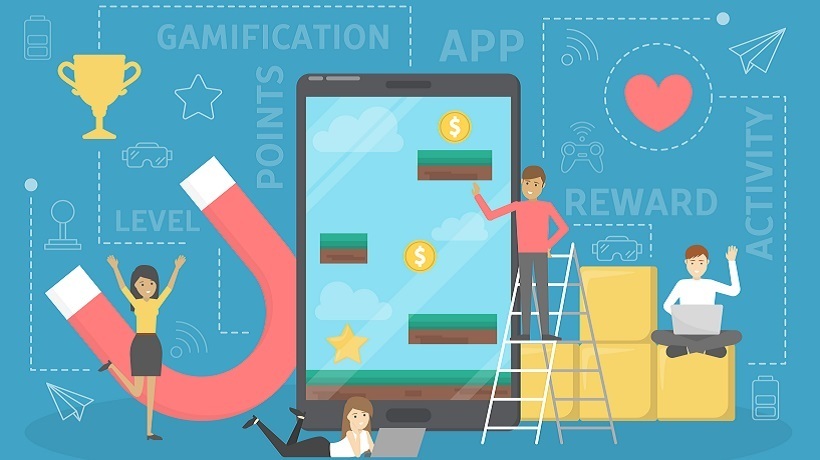Gamification In eLearning
Gamification by definition is a concept of using artifacts and ideas known from games to stimulate desired behaviours. Check the short clip about one of the most popular gamification cases which is the Piano Stairs.
When we consider gamified eLearning we mostly think about limited number of such artifacts - usually various rewards (eg. badges) and credits (eg. points). Let's take a look at more options which could help to build a gamified eLearning environment.
How To Build A Gamified Environment
Many of modern games (tabletop games, computer games, card games) let people play together. While playing they not only compete with each other, but they are also supporting and motivating themselves. Winning a badge for solving a quiz is no motivational at all in comparison with being better than the colleague from the next isle in the office. People like to interact with each other - like to cooperate or to compete. Winning with other people seems to be the highest reward.
- Do you gamify your eLearning solutions by engaging people in interactions? Do you stimulate competition or cooperation? Do you reward winners of competition and leaders of cooperative actions? How do you stimulate peer-to-peer learning in your eLearning solution?
Sometimes games are beautiful. Just take a look at games from Days of Wonder or check new productions of computer games. People like to use beautiful things - beauty brings positive emotions and motivates to interact with such a product.
- Do you take care of aesthetics of your eLearning solution? Is your eLearning product visually designed with proper engagement?
Games have goals. So do eLearning courses. Games also have some rules which bring restrictions to the games' worlds. These rules must be accepted by players. Existence of rules brings some kind of security - I know what are the consequences of taking or not taking some actions.
- Do you clearly communicate goals of your eLearning solution? Do you contract with the learner for some rules? Do you create a secure, predictable learning environment for your target group?
In games goals are being reached by challenges and tasks. They bring emotions which engage and stimulate players. According to Flow Theory they have to be calibrated to be appropriate to one's skill level. Challenges and tasks have to be concluded with feedback, which let players understand the issue and go to the next level of competency.
- Do you provide well-calibrated challenges and tasks in your eLearning solution? Are their complexity grow to let learners climb on the competency ladder? Do you provide good feedback to your challenges giving people a chance to understand the learning issues?
Good games are well calibrated - they require effort to pass the next level. According to the Flow Theory - when the game is too easy it is boring. When it is too hard it is scary.The complexity of good game grows while player builds new abilities (both personal and connected with his/her avatar in the game).
- Does you eLearning solution require some effort to complete? Or does it require only a competence of hitting the next button? How do you support learners in these efforts when they can't move for any reason to the next level?
Games give choices. The player can choose the path. He/she can play one, or another card, can kill or show mercy. In the game the player is to some extent free - he/she can take decisions and bear the consequences. The player also can learn from successes and failures. These choices create uncertainty which brings excitement.
- Do you open your eLearning solution for exploration by learners? Do you let them choose the path of development or do you provide a very strict way of consuming your eLearning product? Do you provide exciting environment which surprises them in every single moment?
Games usually tell stories. If you don't believe - just take the manual to the most primitive tabletop game and read it. Even the Chess and the Angry Birds have their own stories... Probably the most complex stories are being told during role playing games (check my favourite Dragon Age by EA). The story builds world of the game (context). The story lets us play the role. When we have the story we can feel like a part of it. It could bring motivation and engagement to the highest level.
- Do you tell stories in your eLearning solution? Do you create an educational, compact and coherent environment (the learning world)? Do you bring learners to some roles which help them master new competencies?
Games are connected with kinesthetic experience. The player moves with the ball, manipulates pawns, moves pieces and artifacts of the game. He/she holds cards, plays with the pad or moves in front of the XBox. These actions let the player experience things. Such an experience helps to encode new information in the brain by additional sensory channel.
- Do you provide in your eLearning solution kinesthetic experiences? Do you include in it only some clickable elements (quizzes, interactions, navigation) or do you offer also some tasks which could detach the learner from the computer (implementation tasks, tasks on the job) and interact with other people (learners, mentor or supervisor)?
And, at the very end, games are providing rewards. Yes - you can give medals, cups and other trophees to players. You can assign points and badges. You can show development of player's avatar or show a progress bar. You can announce the winner. Rewards, however, should be connected with effort. And result of this effort (state of satisfaction in reaching the goal) itself should be the most substantial element of the reward system. And, last but not least, the power of the reward will be much bigger if it will be trully appreciative - granted among people.
- What is the reward system in your eLearning solution? Is it based only on a shallow, mechanistic approach of earning credits for consumption of the material? Or maybe it utilizes more complex approaches based on real efforts reaching new competences? Is it possible to reward a learner in front of other people?
There are many mechanisms of games which could be used to gamify your eLearning solution. As badges and points are the simplest to think about they became the most popular one. To create trully enjoyable, engaging and fun solution which stimulates desired behaviours we have to remember, however, about the complexity of games and situationally use all of their artifacts.










